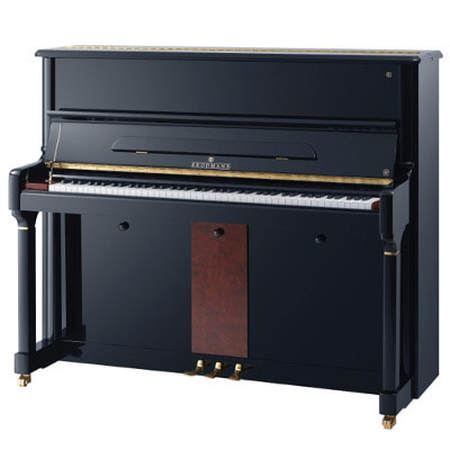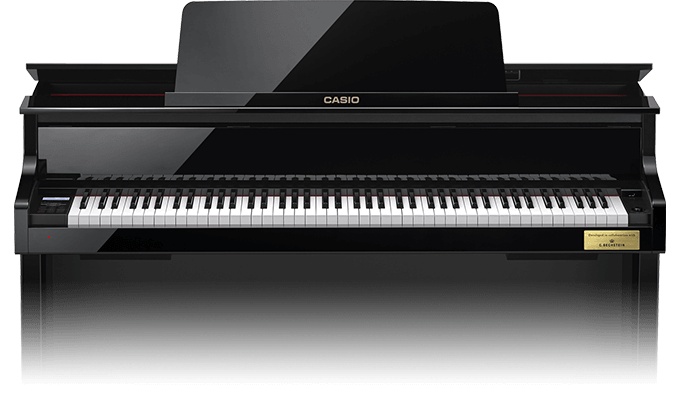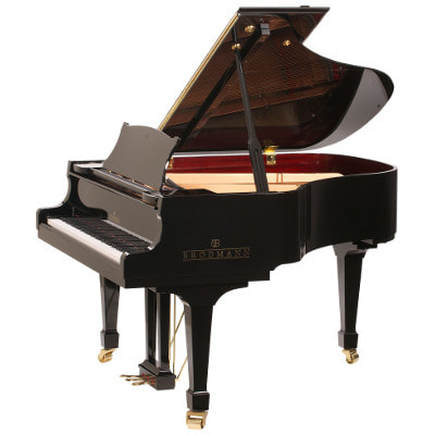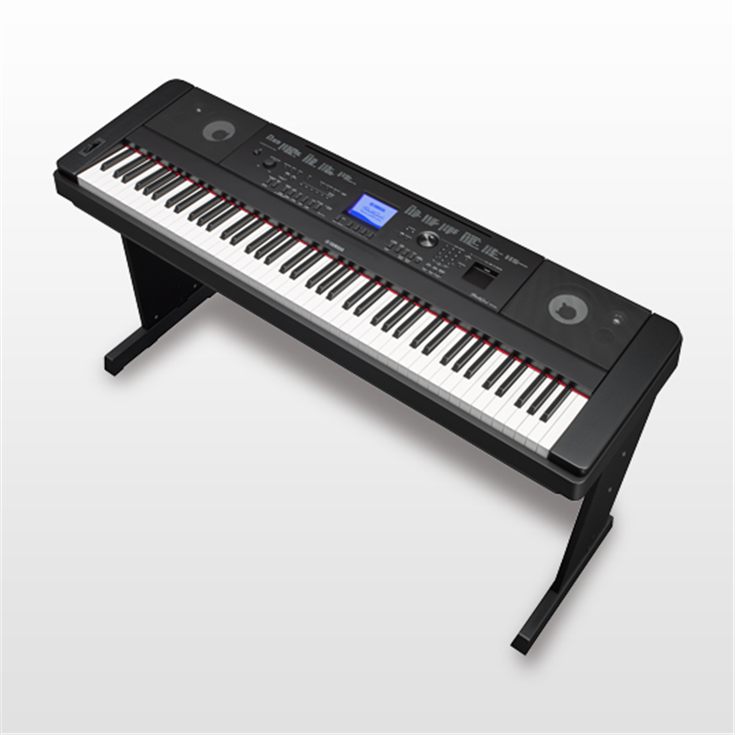KEYBOARD OR PIANO?
I am often asked this question so thought I would note down some of the main points for and against each choice.
You may feel an understandable reluctance to spend a lot of money if you are not yet sure whether a child will like playing. However, if they don't have something to practise on, your son or daughter will not get the most out of their lessons and won't be able to judge effectively whether they like learning or not!
There are three main options – a keyboard, a digital piano or an acoustic piano. At the earliest stages, many of the skills are the same, but pianos and keyboards are two different instruments. They require the development of different techniques and there are separate examinations for each one. If a child decides to concentrate on electronic keyboard then they would normally need to have an electronic keyboard to practise on after the first couple of terms. However, piano students can manage with a good electronic instrument for a while longer.
You may feel an understandable reluctance to spend a lot of money if you are not yet sure whether a child will like playing. However, if they don't have something to practise on, your son or daughter will not get the most out of their lessons and won't be able to judge effectively whether they like learning or not!
There are three main options – a keyboard, a digital piano or an acoustic piano. At the earliest stages, many of the skills are the same, but pianos and keyboards are two different instruments. They require the development of different techniques and there are separate examinations for each one. If a child decides to concentrate on electronic keyboard then they would normally need to have an electronic keyboard to practise on after the first couple of terms. However, piano students can manage with a good electronic instrument for a while longer.
Click on the images to access a demo of each instrument
Choosing an acoustic pianoSize is important so buy the tallest piano you can afford – both financially and in terms of available space. New pianos are described as 108, 121 etc cm – the height of the case gives a good indication of the length of the strings and therefore the depth of tone. Many older pianos will be considerably taller.
It is often the case that a large well-made upright can sound richer than many a baby grand. Click on the images to access a demo of each instrument  Brodmann Vienna Upright Brodmann Vienna Upright
Try before you buy. If buying from new, make sure you try the exact piano you are going to get – even another example of the same model may have a very different sound. If buying second hand, don’t be fobbed off by anyone who says it could be cheaply reconditioned or would sound better after a tuning. Anyone who is serious about selling will have tuned the instrument ready for you to try. There is also the risk that if it has not been tuned for many years, the pins will have become stuck and it may be impossible to work on. Get help. New or second hand, this is a significant investment. Anything from a dealer at under £1000 is unlikely to give lasting pleasure as your playing develops, and may actually do damage to your technique or your ear. A pianist will be able to tell you if the action on a piano is basically even and smooth, and whether the touch is heavy or light; a tuner will be able to tell you if the instrument appears well made and technically sound. The web is your friend. Cheaper, mass-produced pianos often bear an ancient 'German-sounding' name that may allude to one of the greats. Search the history and provenance of your instrument. Steinhoven are in no way connected to Steinway, and Reid Sohn are very different to Steingraber & Sohne. Look inside. You want an ‘overstrung’ piano (the strings run diagonally and cross over each other). You also should look for ‘underdamper’ action (the dampers are behind the strings in an upright or beneath them in a grand). It is quite difficult to see the sound board (the wood the strings are mounted on), but if there are cracks in this the resonance will be impaired and it will jump out of tune all the time. Trust your judgement Do you personally love the sound from this piano? There is a huge variety of tone colour between pianos and personal taste must come into it! Is it handsome enough to be welcome in your front room? Or at least not too ugly to give house room at all? Yes, perhaps it shouldn’t matter—but we all know it does! I would be a shame to confine your children to practice in a cold draughty corridor just because you can’t stand the sight of the case…. I hope this information is useful. These are only my personal opinions, and a great deal of ink has been spilt in the discussion of what instrument to buy, and not all of it comes to the same conclusion as I do. Try the UK Piano Tuners' Association web site for more information. Click on the images to access a demo of each instrument |
Choosing a digital pianoDigital pianos have vastly improved in terms of touch and tone in recent years.
The important thing to look for to support learning the piano is hammer weighted action and touch sensitivity. A good touch will then produce a rewarding tone. Bear in mind that the makers do not go out of their way to sample anything but well-played sounds from beautiful concert grands – so it is quite possible to play a digital with very little finesse yet still not produce a ugly sound. While this might sound like a benefit at first, it can damage your learning in the longer term. Click on the images to access a demo of each instrument  Casio Grand Hybrid Casio Grand Hybrid
At entry level, the Yamaha Piaggero NP-32 (RRP £323.00) has 61 and 76 key options with 64-tone polyphony and is touch sensitive. No rhythms or styles on these and they are styled like a digital piano. Although graded to give the impression that lower keys are heavier than higher ones, the keys still feel very ‘keyboardy’. These 'beginner' instruments would need upgrading at around Grade 3 or 4. Going up in price slightly, a Casio CDP-130 (RRP £479) or Yamaha P-45 (RRP £447) have 88 full size keys, 48-tone polyphony and graded hammer action. These pianos would only need upgrading at around Grade 4 or 5. I would unhesitatingly recommend a Clavinova CLP 625 or higher which you can get for around £1100 on-line. Casio AP, Celviano digital and Hybrid Grand instruments are also very fine; while expensive, the best of these could take you all through all the classical and jazz grades without the need to upgrade, so long as you can get some time on a good acoustic in the run up to a performance. Click on the images to access a demo of each instrument Many digital pianos will have some elementary recording functionality – probably only a couple of tracks deep. Only a few songs will fit in its integral memory – but you can use USB storage devices to supplement this. Most have a limited but enjoyable range of sampled instruments – the range of keyboard instruments including pipe organ and harpsichord, perhaps wood bass, strings and guitar.
The Yamaha DGX models have a greater range of digital features such as recording, rhythms, a wide variety of voices and styles, but still feel more like a piano. Second hand examples of previous years’ models are well worth looking out for. |
Choosing a keyboard
Click on the images to access a demo of each instrument
What are the keyboard 'must haves'?
Most keyboards have many good features including demo songs and the ability to add backing tracks and chords. They have large banks of sampled sounds, and you can get creative with multi-track recordings of your own playing. They also interface with a PC and USB storage devices for MIDI music file storage and direct input to music-writing software packages. Many secondary school pupils will be taught on keyboards in their key stage 3 and GCSE work so there are obvious advantages in having a similar instrument at home.
61 keys: Right from the first lesson we will be playing up and down the keyboard. We don't need 88 keys like a full size piano but we will want enough to be able to sense the difference between very high and very low pitches. You can get keyboards with as few as 49 keys but I would recommend 61 or more
8-note polyphony: Basically, how many notes can be sounded at once. A good keyboard teacher will use single fingered chords only at the very beginning; your child will be playing several keys together to create chords from quite early on. We use the functionality to learn about harmony and explore musical texture. Your instrument will need to have at least 8 tone polyphony
⅞ inch keys: Even if your child's hands are very small, a keyboard with mini keys will cause problems as keyboard lessons will be on full size keys.
Touch sensitive keys: One of the most enjoyable aspects of learning the piano is playing loud sounds and soft sounds. Your child's instrument should have touch sensitivity, so that if the key is struck with more force the sound produced is louder
Pedals Do check what is supplied - foot switch types bear little resemblance to a piano pedal.
The Roland BK-3 backing keyboard is an excellent option with 'velocity'-sensitive keys, highly intelligent harmonising and up-to-date styles and instruments on board, for around £350. Both the Casio CTK-3200 (RRP £149.99) and the Yamaha PSR-E323 (RRP £159.99) have 61 keys with 48-tone polyphony will meet all basic requirements.
Most keyboards have many good features including demo songs and the ability to add backing tracks and chords. They have large banks of sampled sounds, and you can get creative with multi-track recordings of your own playing. They also interface with a PC and USB storage devices for MIDI music file storage and direct input to music-writing software packages. Many secondary school pupils will be taught on keyboards in their key stage 3 and GCSE work so there are obvious advantages in having a similar instrument at home.
61 keys: Right from the first lesson we will be playing up and down the keyboard. We don't need 88 keys like a full size piano but we will want enough to be able to sense the difference between very high and very low pitches. You can get keyboards with as few as 49 keys but I would recommend 61 or more
8-note polyphony: Basically, how many notes can be sounded at once. A good keyboard teacher will use single fingered chords only at the very beginning; your child will be playing several keys together to create chords from quite early on. We use the functionality to learn about harmony and explore musical texture. Your instrument will need to have at least 8 tone polyphony
⅞ inch keys: Even if your child's hands are very small, a keyboard with mini keys will cause problems as keyboard lessons will be on full size keys.
Touch sensitive keys: One of the most enjoyable aspects of learning the piano is playing loud sounds and soft sounds. Your child's instrument should have touch sensitivity, so that if the key is struck with more force the sound produced is louder
Pedals Do check what is supplied - foot switch types bear little resemblance to a piano pedal.
The Roland BK-3 backing keyboard is an excellent option with 'velocity'-sensitive keys, highly intelligent harmonising and up-to-date styles and instruments on board, for around £350. Both the Casio CTK-3200 (RRP £149.99) and the Yamaha PSR-E323 (RRP £159.99) have 61 keys with 48-tone polyphony will meet all basic requirements.



